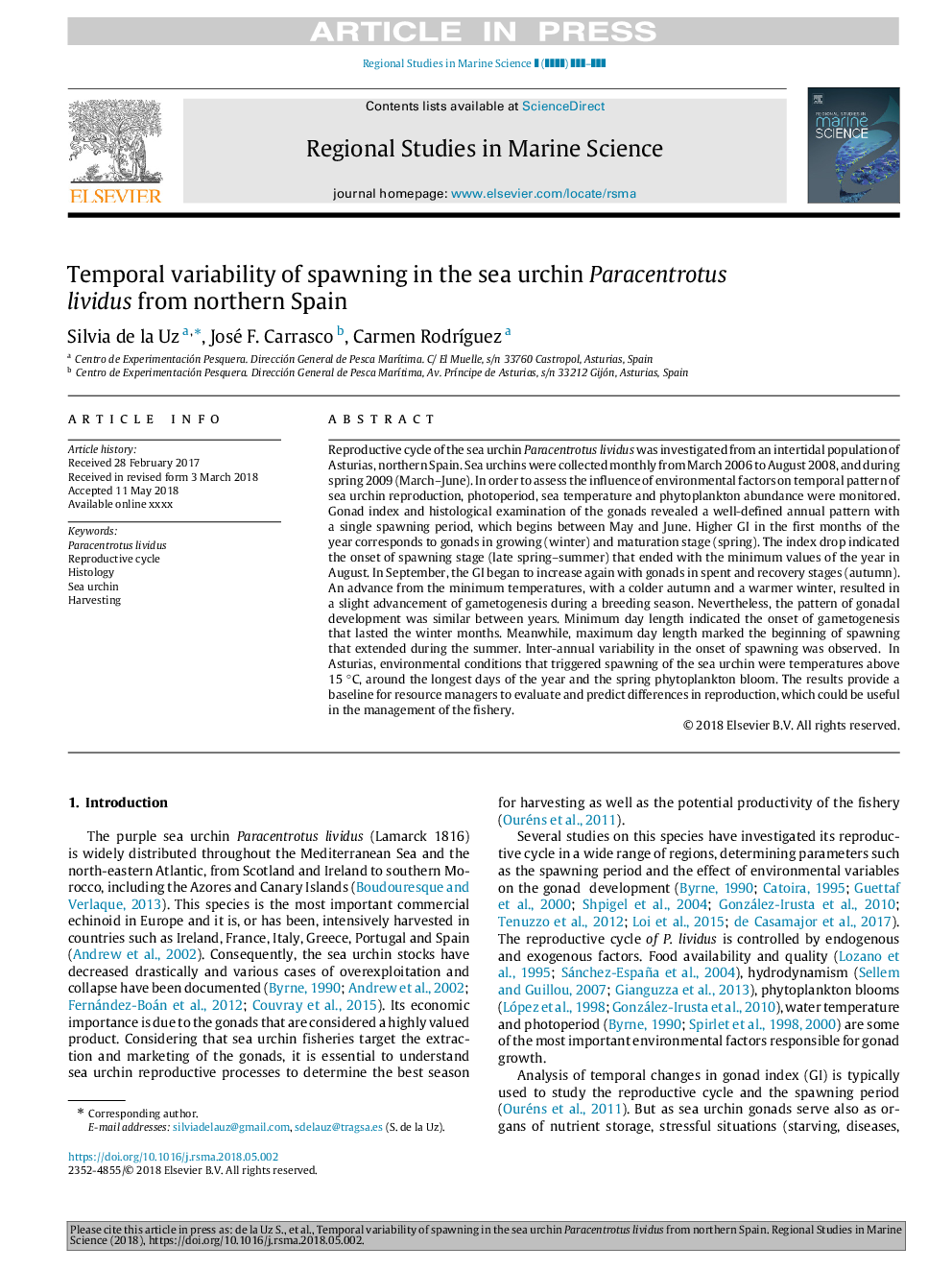| Article ID | Journal | Published Year | Pages | File Type |
|---|---|---|---|---|
| 10223681 | Regional Studies in Marine Science | 2018 | 6 Pages |
Abstract
Reproductive cycle of the sea urchin Paracentrotus lividus was investigated from an intertidal population of Asturias, northern Spain. Sea urchins were collected monthly from March 2006 to August 2008, and during spring 2009 (March-June). In order to assess the influence of environmental factors on temporal pattern of sea urchin reproduction, photoperiod, sea temperature and phytoplankton abundance were monitored. Gonad index and histological examination of the gonads revealed a well-defined annual pattern with a single spawning period, which begins between May and June. Higher GI in the first months of the year corresponds to gonads in growing (winter) and maturation stage (spring). The index drop indicated the onset of spawning stage (late spring-summer) that ended with the minimum values of the year in August. In September, the GI began to increase again with gonads in spent and recovery stages (autumn). An advance from the minimum temperatures, with a colder autumn and a warmer winter, resulted in a slight advancement of gametogenesis during a breeding season. Nevertheless, the pattern of gonadal development was similar between years. Minimum day length indicated the onset of gametogenesis that lasted the winter months. Meanwhile, maximum day length marked the beginning of spawning that extended during the summer. Inter-annual variability in the onset of spawning was observed. In Asturias, environmental conditions that triggered spawning of the sea urchin were temperatures above 15 °C, around the longest days of the year and the spring phytoplankton bloom. The results provide a baseline for resource managers to evaluate and predict differences in reproduction, which could be useful in the management of the fishery.
Related Topics
Physical Sciences and Engineering
Earth and Planetary Sciences
Oceanography
Authors
Silvia de la Uz, José F. Carrasco, Carmen RodrÃguez,
